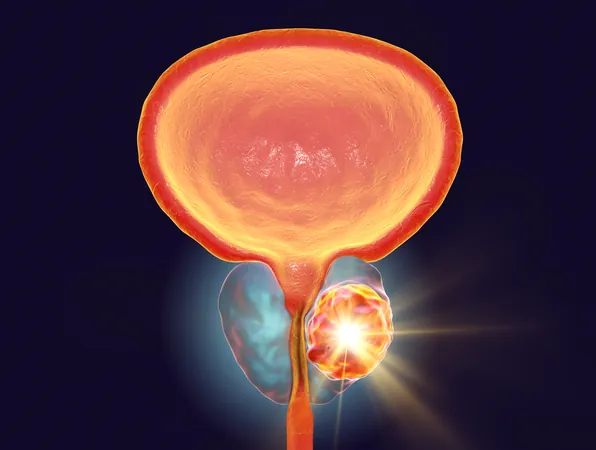
Groundbreaking Study: Microultrasound Could Revolutionize Prostate Cancer Diagnosis!
2025-03-25
Author: Siti
A pioneering international clinical trial has revealed that microultrasound-guided biopsies may be just as effective as traditional MRI-guided procedures for diagnosing prostate cancer. This game-changing technology promises not only to streamline the diagnostic process but also to significantly reduce costs and hospital visits for patients, according to findings presented at the 2025 European Association of Urology (EAU) Congress in Madrid.
The trial, known as OPTIMUM, is the first of its kind to directly compare the effectiveness of microultrasound (microUS) with MRI-guided biopsies. Conducted across 19 hospitals in Canada, the United States, and Europe, the study involved 677 men, with participants divided into three groups: one receiving only MRI-guided biopsies, another undergoing microultrasound biopsies followed by MRIs, and a third group receiving microultrasound biopsies exclusively.
Results indicated that microUS detected prostate cancer at rates comparable to MRI-guided biopsies, even for patients who underwent both procedures. Remarkably, the microultrasound method identified a significant majority of cancers, suggesting that it could replace MRI biopsies in many cases.
The Science Behind Microultrasound
Microultrasound operates at a higher frequency than conventional ultrasound, delivering images with three times the resolution of standard ultrasounds—offering clarity similar to that of MRIs. This higher degree of detail allows urologists and oncologists, who can be trained with relative ease, to pinpoint tumors more effectively than ever before. The simplicity and cost-effectiveness of microUS also mean it can be performed in a single appointment, eliminating the need for multiple trips to the hospital.
Dr. Laurence Klotz, the lead investigator of the OPTIMUM trial and a prominent figure at the University of Toronto's Temerty Faculty of Medicine, underscores the potential revolutionization of prostate cancer diagnostics. "When MRI first emerged, it changed the game for targeting biopsies. However, it’s expensive and demands specialized expertise," he explained. "In contrast, microUS not only matches MRI in diagnostic accuracy but is also less toxic and more accessible."
Experts like Dr. Jochen Walz from the Institut Paoli-Calmettes Cancer Center in France echo this enthusiasm, citing the reduced likelihood of errors that arise from transferring MRI data into ultrasound for fusion biopsies. "Once the necessary training is complete, microUS can allow for simultaneous diagnosis and biopsy in a single visit. This is especially crucial in under-resourced healthcare systems where MRI availability is limited."
Future Implications
The implications of the OPTIMUM study could steer the future of prostate cancer diagnostics towards a more efficient model, potentially leading to earlier detection and treatment. There is immense hope that the accessibility and low cost of microUS will enable it to be implemented in screening programs, although further research is required to establish its role in this area.
Given its transformative potential, microultrasound could very well become the go-to tool in the early detection of prostate cancer, promising a brighter future for countless patients. As the medical community takes these findings on board, the landscape of prostate cancer diagnosis may be on the brink of a remarkable shift. Stay tuned for more updates on this groundbreaking advancement!




 Brasil (PT)
Brasil (PT)
 Canada (EN)
Canada (EN)
 Chile (ES)
Chile (ES)
 Česko (CS)
Česko (CS)
 대한민국 (KO)
대한민국 (KO)
 España (ES)
España (ES)
 France (FR)
France (FR)
 Hong Kong (EN)
Hong Kong (EN)
 Italia (IT)
Italia (IT)
 日本 (JA)
日本 (JA)
 Magyarország (HU)
Magyarország (HU)
 Norge (NO)
Norge (NO)
 Polska (PL)
Polska (PL)
 Schweiz (DE)
Schweiz (DE)
 Singapore (EN)
Singapore (EN)
 Sverige (SV)
Sverige (SV)
 Suomi (FI)
Suomi (FI)
 Türkiye (TR)
Türkiye (TR)
 الإمارات العربية المتحدة (AR)
الإمارات العربية المتحدة (AR)